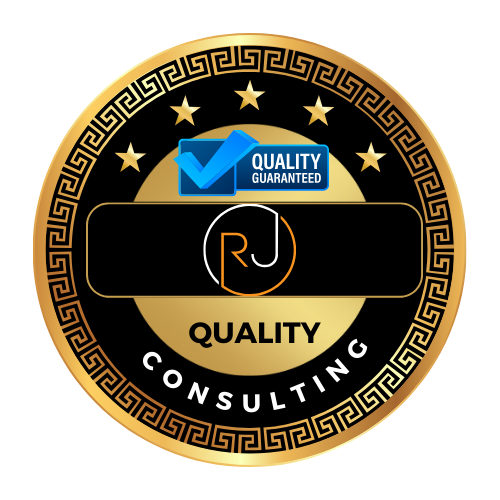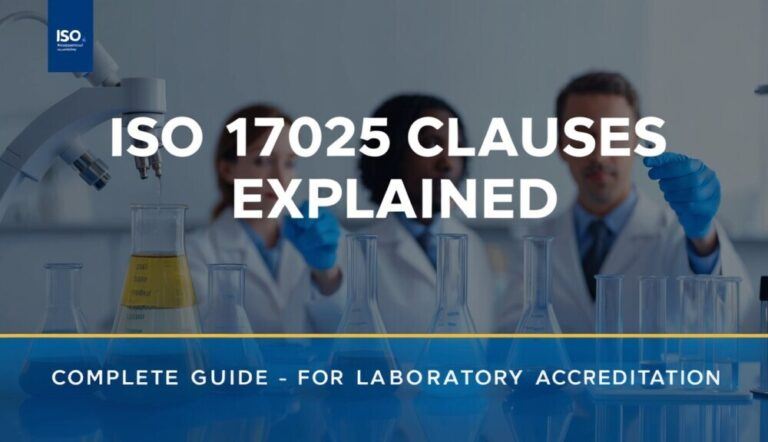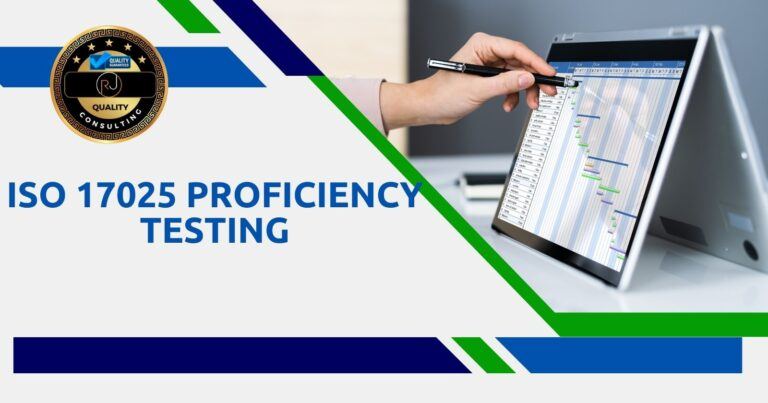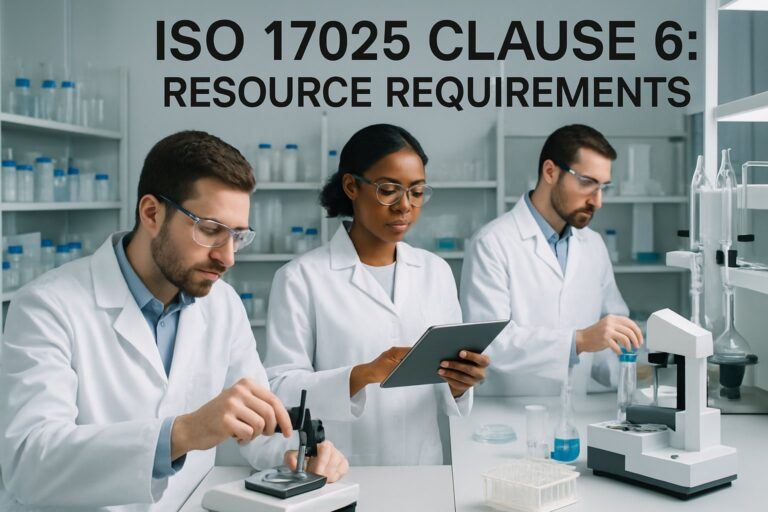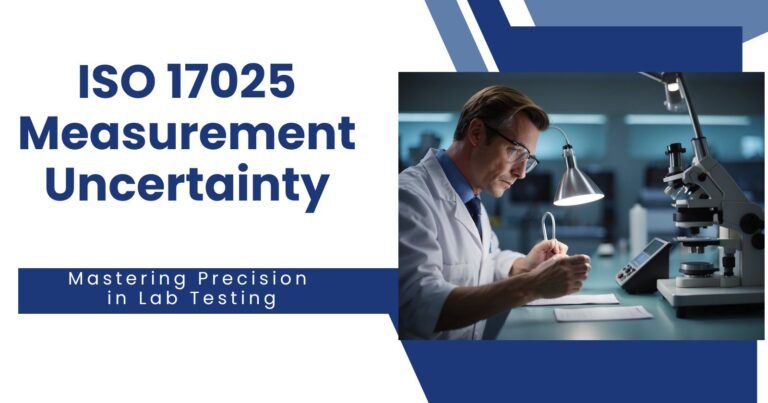Risk Management in the Laboratory: Essential Strategies for Safety and Compliance
Risk management in the laboratory is crucial for keeping workers safe and ensuring accurate test results. Labs handle dangerous materials and perform complex procedures daily. Without proper safeguards, accidents can happen that put people and data at risk. Good risk management in the laboratory helps labs prevent problems before they start and respond quickly if issues do arise.

Labs face many potential hazards, from chemical spills to equipment failures. A risk management plan looks at all these dangers and finds ways to reduce them. This might mean better safety gear, updated procedures, or new training for staff. The goal is to create a culture of safety where everyone plays a role in preventing accidents.
Risk management also protects the quality of lab work. By identifying weak points in testing processes, labs can fix errors that might lead to wrong results. This is especially important in medical labs, where test outcomes affect patient care. A strong risk management approach helps labs deliver reliable data that doctors and patients can trust.
📘 ISO/IEC 17025 Quality Manual Template
Accelerate your lab’s accreditation process with our comprehensive Quality Manual Template, designed to align with ISO/IEC 17025:2017 standards.
- Fully editable and customizable to fit your laboratory’s needs.
- Includes all necessary procedures, forms, and policies.
- Structured to facilitate easy implementation and compliance.
- Developed by experts with extensive ISO/IEC 17025 experience.
Key Takeaways
- Risk management protects lab workers and improves test accuracy
- A good plan identifies hazards and creates safety procedures
- Effective risk management leads to more reliable laboratory results
Fundamentals of Risk Management in the Laboratory
Risk management in labs keeps everyone safe and helps work run smoothly. It’s all about finding problems before they happen and fixing them.
Risk Management Principles
Risk management in labs starts with being aware of possible dangers. You need to look for things that could go wrong. This includes unsafe actions, faulty equipment, or harmful chemicals.
Next, you figure out how bad each risk could be. Some risks are more serious than others. You also think about how likely each risk is to happen.
After that, you make plans to deal with the risks. This might mean changing how you do things or getting new safety gear. The goal is to make the lab as safe as possible.
Risk Assessment Processes
To assess risks, you first make a list of all possible dangers. You can use checklists or ask lab workers for input.
Then you rate each risk. You look at how bad it would be if it happened and how likely it is. You can use a simple scale like low, medium, or high.
Here’s an example of how you might rate risks:
| Risk | Severity | Likelihood | Overall Rating |
|---|---|---|---|
| Chemical spill | High | Medium | High |
| Broken glassware | Medium | High | Medium |
| Fire | High | Low | Medium |
This helps you see which risks need the most attention.
Risk Mitigation Strategies
Once you know the risks, you need to deal with them. Here are some ways to do that:
- Change how you do things to avoid risks
- Use safer chemicals or equipment
- Get better safety gear for workers
- Train staff on safety rules and what to do if something goes wrong
- Put up signs to warn about dangers
- Have plans ready in case of accidents
You should check often to make sure these steps are working. If not, you may need to try something else.
Laboratory Risk Identification

Risk identification is a key step in managing laboratory safety. It involves spotting potential hazards before they cause harm. This process helps labs prevent accidents and maintain quality.
Risk Evaluation in Laboratory Settings
You need to examine all areas of your lab to find risks. Look at equipment, chemicals, and work practices. Check if safety gear is used properly. Review past incident reports to spot patterns. Consider biological, chemical, physical, and ergonomic hazards.
Create a checklist for regular safety walks. This helps you catch new risks as they come up. Talk to lab staff about their safety concerns. They often notice issues you might miss. Don’t forget to assess risks in sample handling and storage areas.
Use a risk matrix to rate the likelihood and impact of each hazard. This helps you decide which risks need the most attention.
Common Laboratory Hazards
Chemical spills are a frequent lab danger. Store chemicals safely and train staff on spill clean-up. Broken glass can cause cuts. Use proper disposal methods for sharp objects.
Fire is another major risk. Keep flammable materials away from heat sources. Install and maintain fire extinguishers. Electrical hazards can lead to shocks or fires. Check cords and outlets regularly.
Biological samples may spread infections. Use proper protective gear when handling them. Ergonomic issues like poor posture can cause long-term health problems. Set up workstations to reduce strain.
Slips and falls often happen in labs. Keep floors dry and clear of clutter. Label all hazards clearly to warn staff and visitors.
Quality Management in the Laboratory

Quality management is crucial for ensuring accurate and reliable laboratory results. It involves systematic processes to meet quality standards and continuously improve performance.
ISO 15189 and Laboratory Accreditation
ISO 15189 is an international standard for medical laboratories. It sets requirements for quality and competence. Labs can seek accreditation to show they meet these standards.
Accreditation involves thorough assessments of lab practices. Auditors check technical competence and management systems. They look at staff qualifications, equipment, and procedures.
Benefits of accreditation include:
- Increased confidence in test results
- Better patient care
- Improved efficiency
- International recognition
Quality Control Measures
Quality control (QC) helps catch and fix errors before they affect results. Key QC measures include:
- Running control samples with known values
- Checking equipment calibration daily
- Participating in proficiency testing programs
- Using statistical tools to monitor test performance
QC charts help track test accuracy over time. They can show when a test is drifting out of range.
Staff training is also vital for quality. Regular updates on procedures and safety keep skills sharp.
Quality Indicators and Performance Evaluation
Quality indicators are measurable factors that reflect lab performance. Common indicators include:
- Turnaround time for test results
- Number of sample rejections
- Customer satisfaction scores
- Error rates in reporting
Labs track these indicators regularly. They set targets and work to improve scores over time.
Performance evaluation looks at the big picture. It compares actual performance to goals. This helps identify areas for improvement.
Regular audits, both internal and external, are key. They provide a fresh look at lab processes and catch issues early.
Risk Control and Mitigation

Risk control and mitigation are key parts of lab safety. You need to set up plans to manage quality and control risks. This helps keep everyone safe and ensures good results.
Developing a Quality Management Plan
A quality management plan helps you control risks in your lab. You should start by mapping out all your testing steps. Look at each step to find weak spots. Then make a plan to fix those issues.
Your plan should cover:
- Staff training
- Equipment checks
- Sample handling
- Data review
Update your plan often. As you find new risks, add them to your plan. This keeps your lab safe and your results accurate.
Individualized Quality Control Plan (IQCP)
An IQCP is a custom plan for your lab’s needs. It looks at your specific risks and how to control them. To make an IQCP:
- List all possible risks
- Rate how likely each risk is
- Plan how to reduce each risk
- Set up checks to catch problems
Your IQCP should fit your lab’s unique setup. It may include extra tests or new safety steps. Review and update your IQCP regularly. This helps you stay on top of new risks as they come up.
Medical Errors and Patient Safety

Medical errors can harm patients. You need to know how to prevent them and follow safety rules. This keeps patients safe and improves care.
Preventing Medical Errors
You can take steps to avoid mistakes in the lab. Double-check patient information before tests. Use barcodes to track samples. Make sure machines are working right. Train staff often on proper methods.
Keep work areas clean and organized. This cuts down on mix-ups. Use checklists for complex tasks. Take breaks to stay alert. Ask questions if you’re not sure about something.
Report near-misses and errors. This helps find weak spots in your system. Learn from mistakes to make care safer.
Safety Protocols and Healthcare Processes
Follow set rules to keep patients safe. Wash your hands often. Wear gloves and other protective gear. Label samples clearly. Use safety equipment like fume hoods when needed.
Check drug allergies before giving medicine. Make sure test results go to the right doctor quickly. Use tools to catch drug interactions. Keep patient info private.
Work as a team. Talk to other staff about patient care. Share important updates. Listen to patient concerns. Good teamwork helps prevent errors and keeps patients safe.
Testing and Examination Processes
Testing and examination processes are key parts of lab work. These steps help make sure test results are correct and useful for patients.
Pre-Examination Procedures
Before testing starts, you need to prepare. Get the right sample from the patient. Label it clearly with their info. Handle and store samples properly to keep them fresh.
Check that you have the right tools and chemicals ready. Make sure machines are clean and working well. Follow safety rules to protect yourself and others.
Keep good records of each sample. Note when it came in and who handled it. This helps if you need to track a sample later.
Laboratory Testing and Analysis
When you test samples, follow the steps carefully. Use the right amount of sample and chemicals. Run tests at the right temperature and for the right time.
Check results against normal ranges. If something looks off, run the test again. Use control samples to make sure your tests are working right.
Keep your work area clean. This stops samples from getting mixed up. It also keeps germs from growing where they shouldn’t.
Post-Examination Practices
After testing, check your results again. Make sure they make sense for the patient. If not, you may need to retest or get a new sample.
Write up clear reports. Use simple words so doctors can understand quickly. Include normal ranges so it’s easy to see if results are high or low.
Store or get rid of samples the right way. Some need to be kept for future tests. Others should be thrown out safely to avoid spreading germs.
Education and Training about Risk Management in the Laboratory
Proper education and training are key to effective laboratory risk management. Learning about best practices and staying updated on safety protocols helps reduce hazards. In addition, understanding the ISO/IEC 17025 standard and how it works is crucial to the understanding of overall risk management in the laboratory. Taking ISO 17025 training courses can certainly help in this area and is highly recommended for all key personnel in the laboratory.
Professional Development for Healthcare Professionals
Healthcare professionals can boost their lab safety skills through workshops and seminars. Many organizations offer training on risk assessment and mitigation strategies. These programs teach you how to spot potential dangers and take steps to prevent accidents.
Hands-on practice is crucial for mastering safety techniques. Look for courses that include lab simulations or virtual reality training. These give you a chance to apply what you’ve learned in realistic scenarios.
Continuing education credits are often available for completing risk management courses. This helps you meet professional requirements while improving lab safety.
Online Resources and Courses
Many online platforms provide convenient ways to learn about laboratory risk management. You can find free webinars, video tutorials, and downloadable guides on various safety topics.
Some websites offer self-paced courses you can take anytime. These cover topics like chemical handling, equipment safety, and emergency procedures. Interactive quizzes help reinforce key concepts.
Professional associations often have members-only resources on their websites. These may include risk assessment templates, safety checklists, and expert advice forums.
Consider joining online communities focused on lab safety. These groups let you share experiences and get tips from other professionals in your field.
Information Management and Communication
Good information management and communication are key to reducing risks in labs. They help ensure everyone has the data they need to work safely and effectively.
Utilizing Laboratory Information Systems
Lab information systems (LIS) are vital tools for managing data and reducing risks. These systems track samples from log-in to reporting. They store and analyze lab data, making it easy to find important information quickly.
LIS help labs share results with doctors and patients fast. This speeds up diagnoses and treatment decisions. The systems also make it simpler to spot trends or issues in lab processes.
To get the most from your LIS:
• Train all staff thoroughly on system use • Set up clear data entry rules • Run regular system checks and updates • Back up data often
Collaboration with the Centers for Disease Control and Prevention
Working with the CDC can boost your lab’s risk management. The CDC offers guidance on best practices for lab safety and quality control.
You can join CDC training programs to learn the latest safety methods. These cover topics like handling dangerous samples and preventing contamination.
The CDC also runs alert systems for disease outbreaks. By connecting to these, your lab can quickly respond to new health threats.
Key ways to work with the CDC:
• Sign up for CDC lab safety newsletters • Take part in CDC webinars on risk reduction • Use CDC checklists for lab safety audits • Report any major lab incidents to the CDC
Frequently Asked Questions
Risk management in laboratories involves key practices and protocols to ensure safety, compliance, and quality. Effective risk assessment, mitigation strategies, and standardized procedures are crucial for preventing accidents and maintaining high standards.
How do risk management practices in the laboratory ensure safety and compliance?
Risk management practices help identify potential hazards and implement controls to prevent accidents. They ensure labs meet safety regulations and industry standards. Regular safety audits and staff training are important parts of risk management.
These practices create a culture of safety awareness. They also help labs stay up-to-date with changing regulations and best practices.
What protocols are involved in developing a standard operating procedure for risk assessment in a laboratory?
Developing risk assessment SOPs starts with identifying all potential hazards in the lab. This includes chemical, biological, physical, and ergonomic risks.
Next, assess the likelihood and severity of each risk. Create a risk matrix to prioritize hazards. Define control measures for each identified risk.
Document the assessment process and results. Include steps for regular reviews and updates of the SOP.
What are the essential elements of a comprehensive risk assessment in a clinical laboratory?
A comprehensive risk assessment includes hazard identification, risk analysis, and risk evaluation. It covers all lab activities, equipment, and materials.
The assessment should consider both routine and non-routine tasks. It must evaluate potential impacts on staff, patients, and the environment.
Include a review of past incidents and near-misses. Consider human factors and the lab’s physical layout in the assessment.
How can risk be effectively mitigated in laboratory settings to prevent accidents and errors?
You can prevent accidents and errors by implementing engineering controls like fume hoods and safety showers. Use personal protective equipment such as gloves and goggles.
In addition, you need to develop and enforce clear safety protocols. Provide regular safety training for all lab personnel.
Also, make sure to maintain equipment properly and calibrate instruments regularly. Finally, implement a system for reporting and investigating incidents.
In what ways does risk management in the laboratory contribute to the overall quality management in laboratory processes?
Risk management improves the accuracy and reliability of lab results. It helps prevent errors that could impact patient care or research outcomes.
It ensures compliance with quality standards and regulations. This can help labs maintain accreditations and certifications.
Risk management also promotes continuous improvement. It identifies areas for process optimization and efficiency gains.
What are the key activities involved in the risk management process within a laboratory environment?
Key activities include conducting regular risk assessments. This involves identifying hazards and evaluating their potential impact.
Developing and implementing risk control measures is crucial. This may include updating procedures or installing new safety equipment.
Ongoing monitoring and reviewing the effectiveness of risk management strategies is necessary. This includes tracking incidents and near-misses.
Training staff on risk management principles and practices is essential. Regular drills and simulations help prepare for potential emergencies.
🕒 Book Your Free 45-Minute Consultation
Have questions about ISO/IEC 17025 or ISO 9001 implementation or accreditation? Schedule a free 45-minute consultation with me to discuss your Company or laboratory’s needs and how we can achieve compliance together.
Schedule Your Consultation